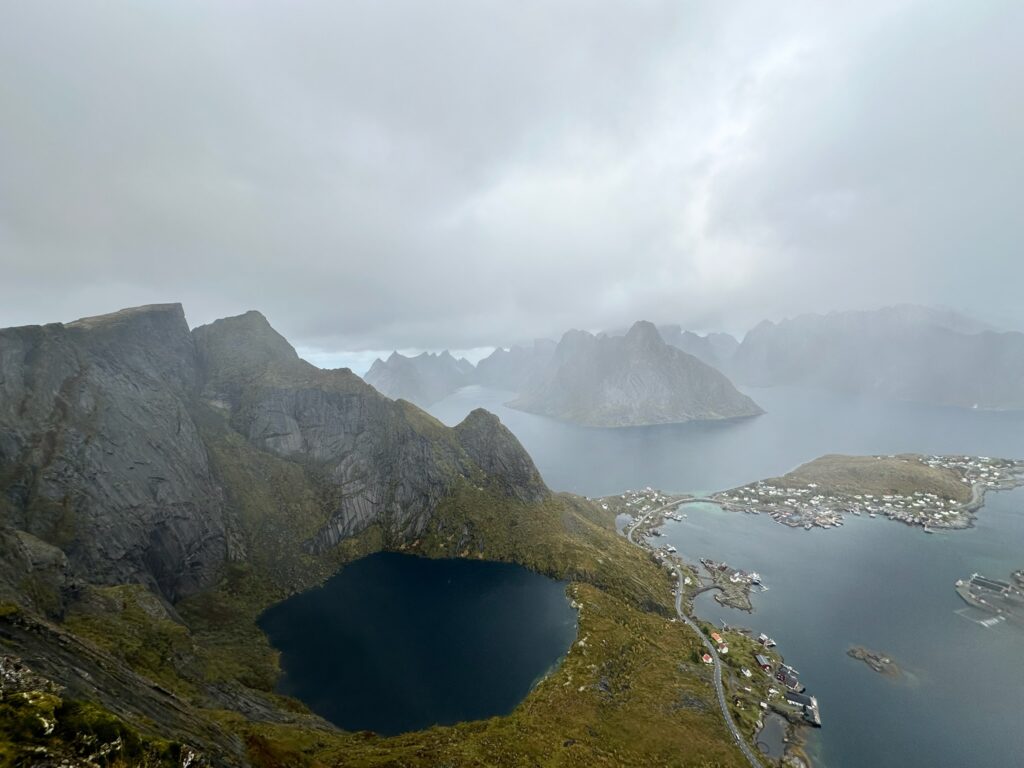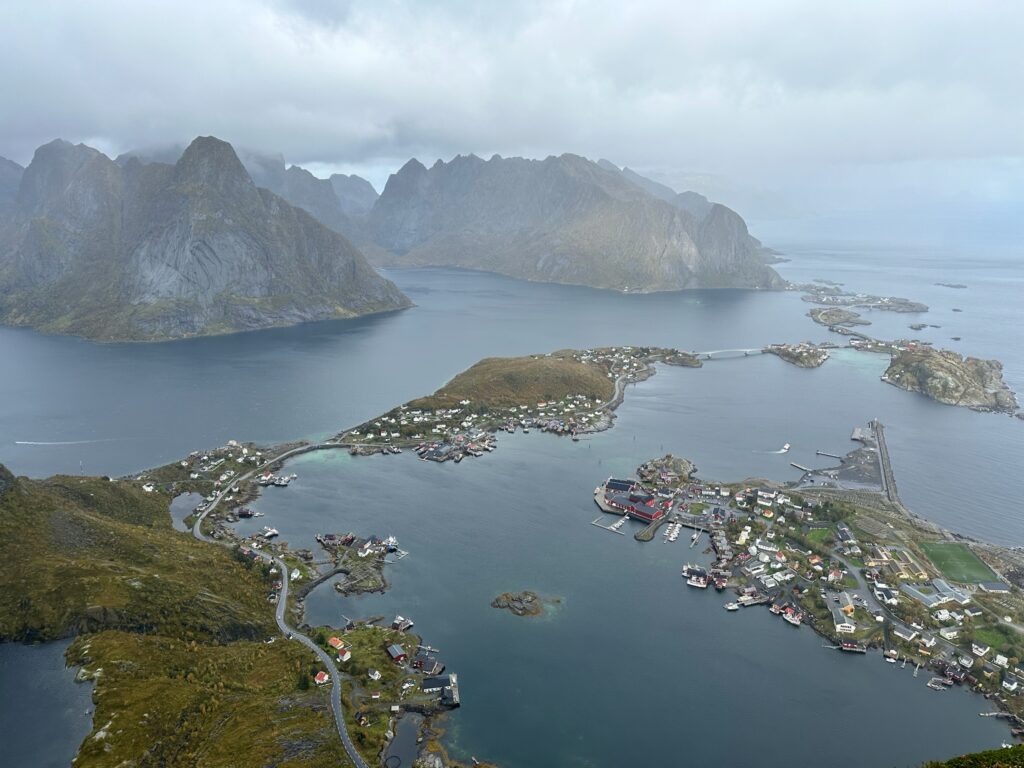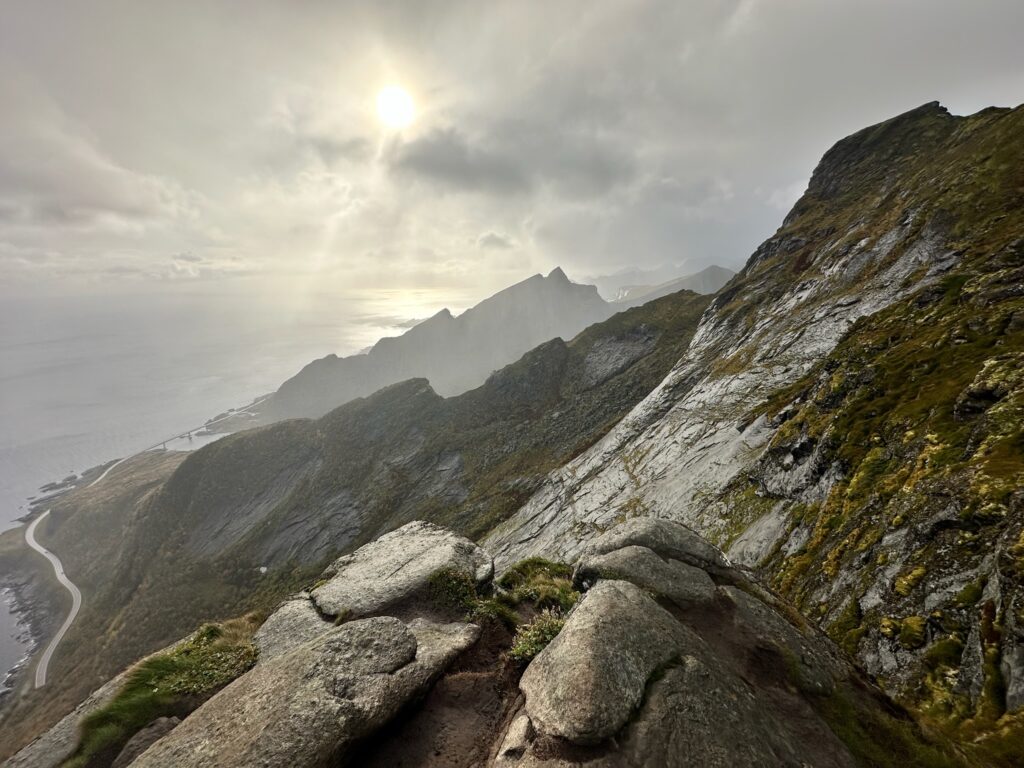
Norway
This page is written by my daughter Lauren, sharing highlights from her trip to Lofoten, Norway with her now-husband, Kenny. Tucked above the Arctic Circle, the Lofoten Islands are rugged, remote, and impossibly beautiful. From dramatic peaks rising straight from the sea to tiny fishing villages and endless golden-hour light, this part of Norway feels like a hidden world. Their trip was filled with hikes, coastal drives, and cozy nights under skies that never quite went dark.
Bodo
We flew into Bodø, picked up our rental car right at the airport, and kicked off the trip with that giddy, jet-lagged excitement that comes from being somewhere completely new. We spent the night in Bodø, which gave us time to rest and grab a good meal before really starting our trip.
The next morning in Bodø, before boarding the ferry, we had a little time to explore the town—and our first mission was coffee and pastries. We wandered through the town, eventually finding a cozy café that smelled like pastries and espresso. The pastries were flaky, buttery, and gone in seconds, and the coffee was exactly what we needed before our long travel day.
The ferry ride from Bodø to Lofoten was beautiful. As we pulled away from the mainland, the views opened up into a mix of open sea and jagged peaks rising in the distance—it felt like we were sailing straight into a postcard. The ride was surprisingly relaxing, with plenty of space to walk around, grab a snack, and just stare out at the water. Watching the islands slowly come into view, with layers of mountains stacked behind one another, made for the perfect introduction to Lofoten.
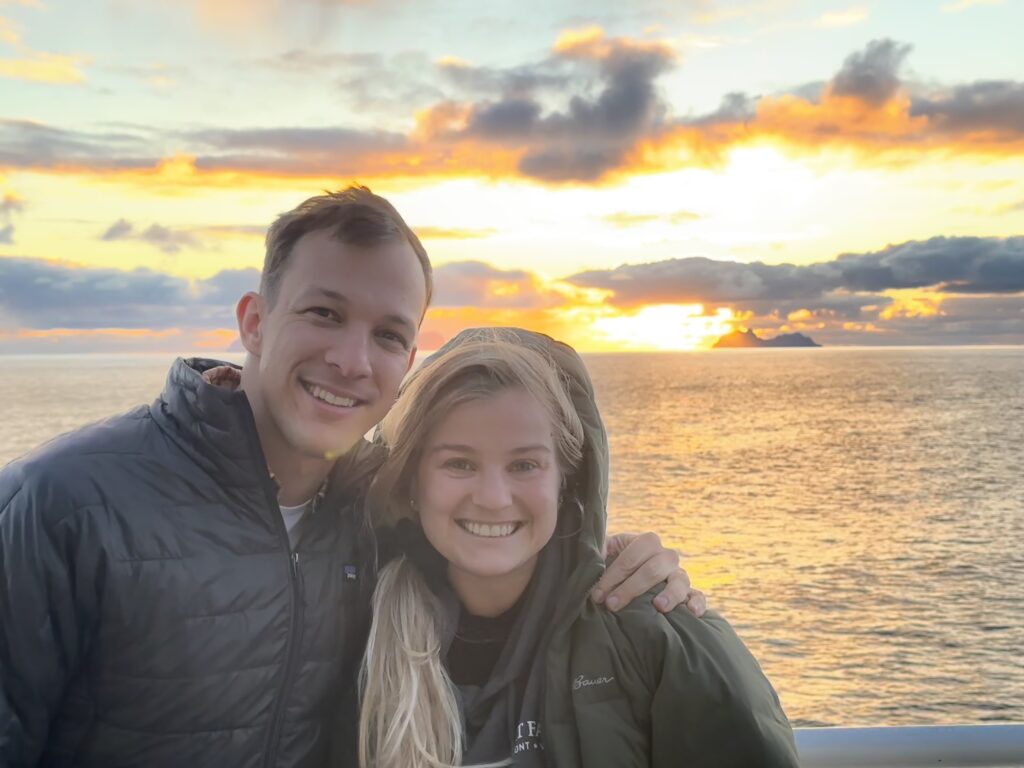
Svolvær
We started our day by venturing to a nearby town of Kabelvåg, a charming little village that felt frozen in time, and had a highly recommended coffee shop. With red cabins, a picturesque harbor, and quiet streets, it offered a slower pace that was perfect after a morning on the water. We wandered past boats and through quiet alleys, grabbed a snack from a small café, and soaked in the peacefulness of the area. It was a great start to the day before we jumped on the fjord tour.
After we had our coffee, we went back to Svolvær for our fjord tour that took us deep into the dramatic, narrow waterways the region is famous for. The boat cut silently through glassy water, surrounded by towering cliffs covered in autumn colors. It was quiet and surreal, like we had stumbled into some secret part of the world that hadn’t changed in thousands of years. Every bend in the fjord revealed something new—hidden inlets, waterfalls, and wildlife perched along the rock faces. It was the kind of scenery that made you want to whisper, just so you didn’t disturb it.
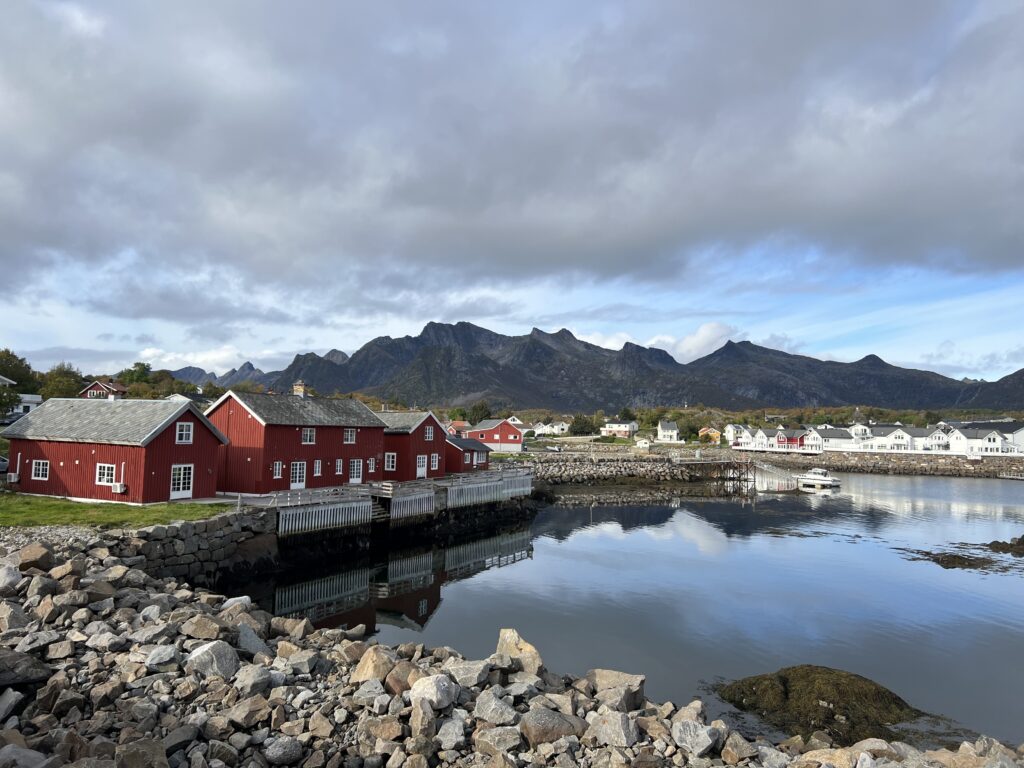

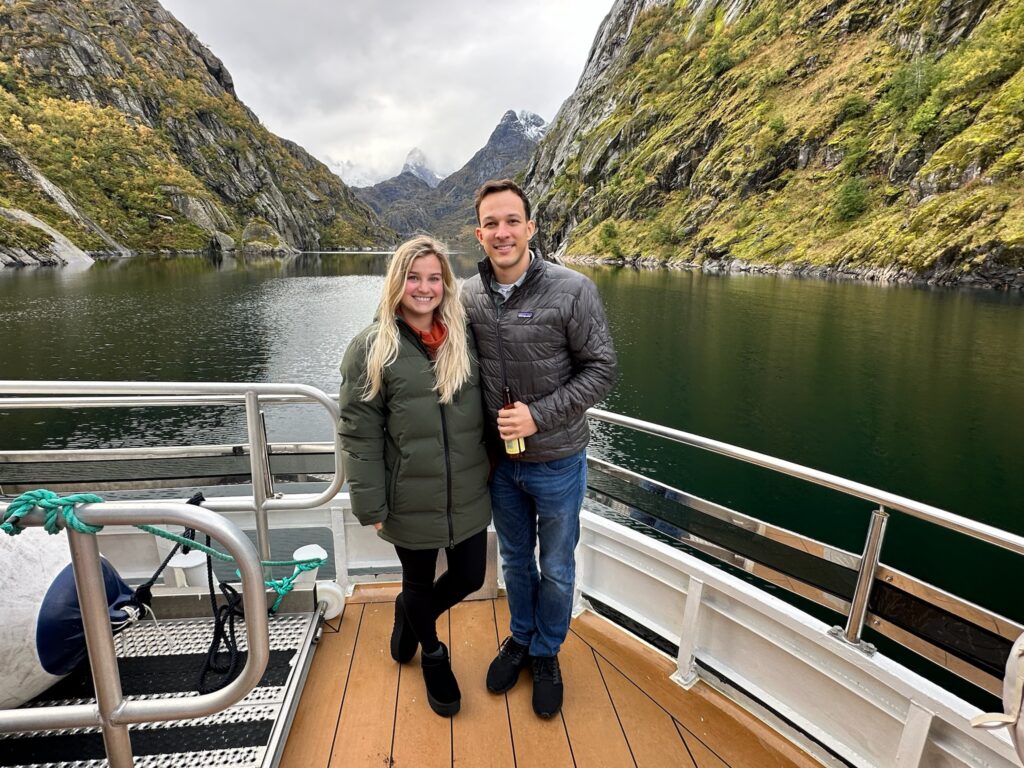
Before leaving Svolvær, we decided to squeeze in one last adventure—a hike to get an aerial view of the city. I’ll be the first to admit, hiking isn’t exactly my favorite activity, but it’s definitely Kenny’s. So, I laced up my boots and off we went.
We chose the Fløya trail, a 590-meter climb that promises jaw-dropping views over Svolvær, its surrounding fjords, and the famous Svolværgeita rock formation. The trail starts off innocently enough near the town cemetery, but it quickly ramps up with steep, rocky sections and even a spot where you have to use a chain to scale a smooth granite slope. It was no joke.
What began as a moderate climb turned into a full-on leg burner, complete with loose rocks and narrow switchbacks. I definitely had my moments of complaining, but once we made it to the top, every step was worth it. The sweeping panorama of mountains, winding waterways, and the town below looked like something out of a postcard. It was challenging, but standing at the summit felt like standing on top of the world—and I’m so glad I pushed through to see it.
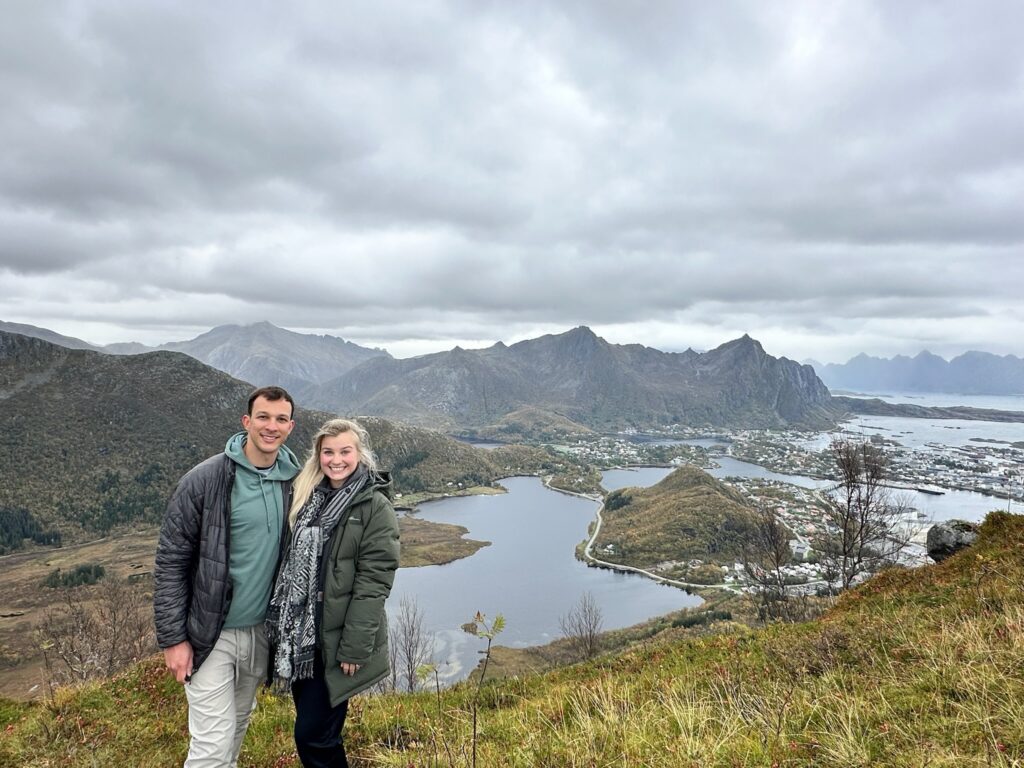
Lødingen
We drove north with the sole purpose of seeing the northern lights, and it didn’t disappoint. After a few days of exploring Lofoten, we made our way up to Lødingen, a quieter town tucked along the water, where we rented an Airbnb with views that stretched out across the fjord. The house was simple but perfect, with a wood-fired hot tub, huge windows, and a deck made for storm watching—or in our case, aurora spotting. The setting felt remote in the best way possible—no distractions, just nature, mountains, and moody skies.
That evening, as the wind howled and the clouds shifted, the skies finally cleared just enough. At first, we thought our eyes were playing tricks on us—was that a cloud, or something more? Then, right above our heads, green light began to dance. It rippled and twisted like a living thing, changing shape with every second. We stood barefoot on the deck, bundled in jackets, grinning like kids as we watched the northern lights swirl above us. After chasing this moment for years, we finally had it—and it was more magical than we ever imagined.

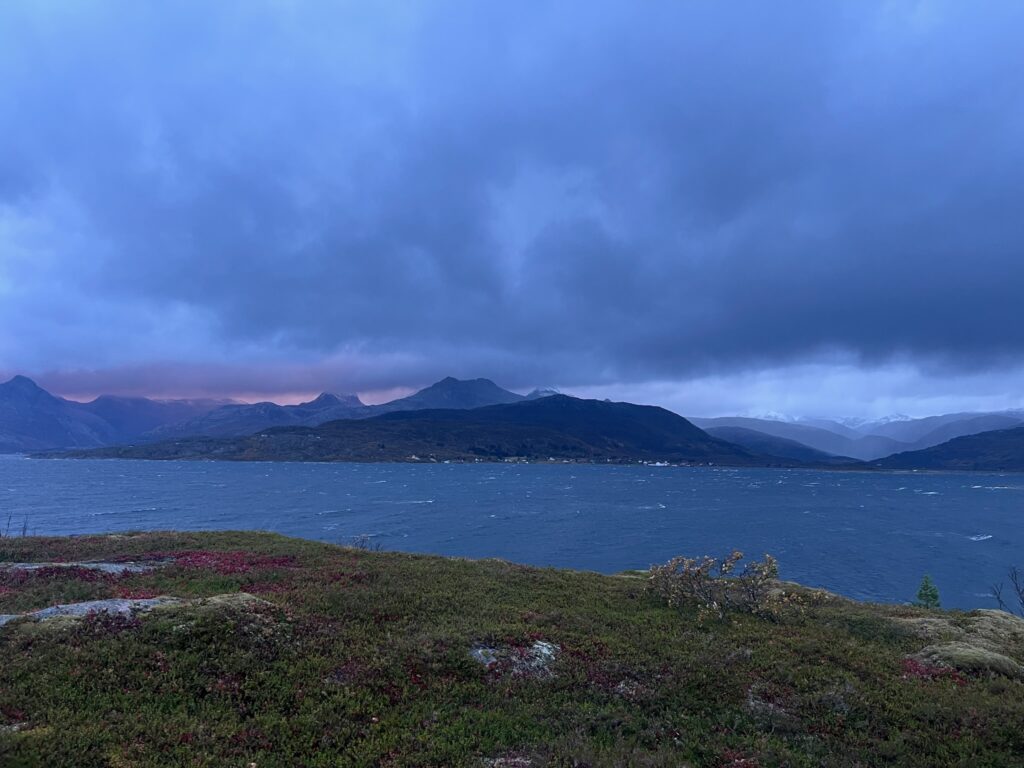
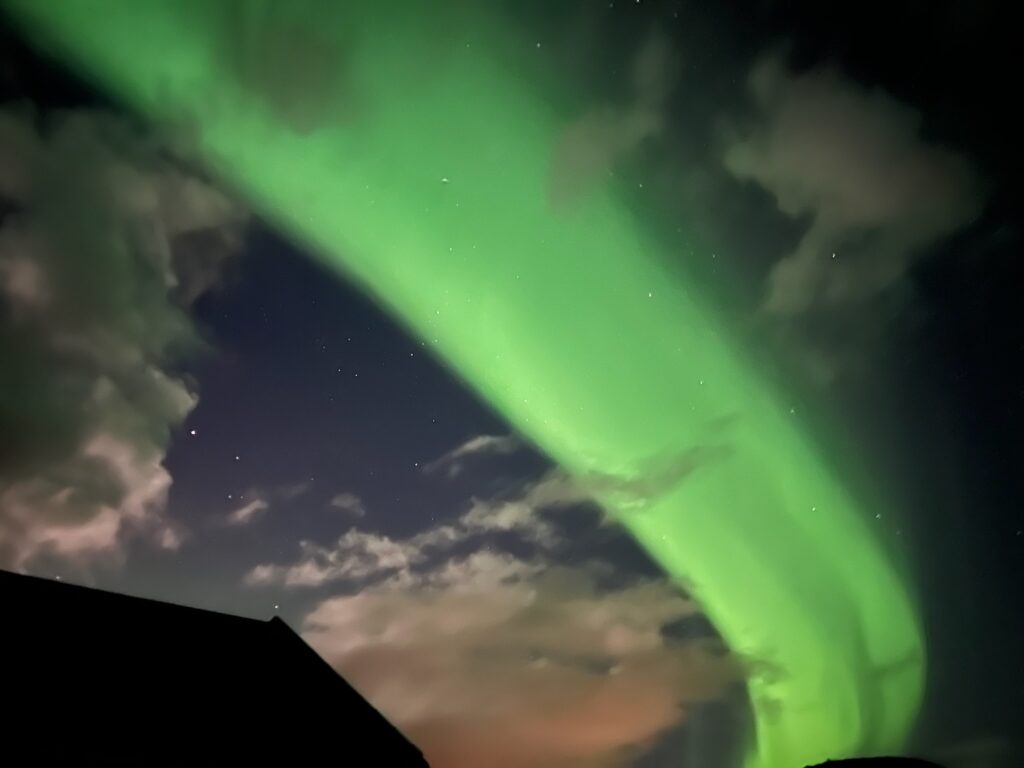
Henningsvær
On our way back to Reine, we took a scenic detour to the small fishing village of Henningsvær—famous not just for its charm, but for having one of the most picturesque soccer fields in the world. Tucked between dramatic mountain peaks and surrounded by the sea, the Henningsvær Stadion feels like it’s perched at the edge of the Earth.
Even if you’re not a soccer fan, the setting is jaw-dropping. With rugged coastline on one side and traditional red and white buildings on the other, it’s hard to believe people get to play pickup games here. We took our time soaking in the views, snapping a few photos, and imagining what it must be like to grow up playing on a field with this kind of backdrop. It was a peaceful, beautiful stop and a perfect example of how even the smallest places in Lofoten offer something unforgettable.

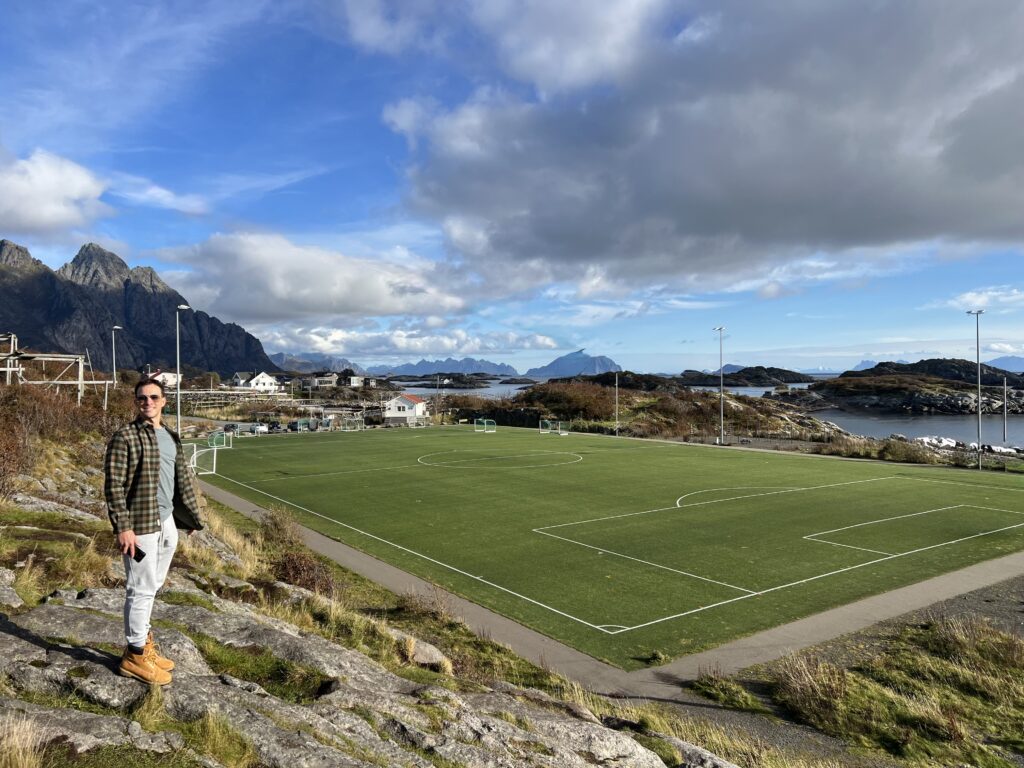
Haukland Beach
One of the final stops on our Lofoten road trip was Haukland Beach, a stretch of coastline that felt like it belonged somewhere tropical—until the wind hit you. With its powdery white sand and turquoise water, Haukland is easily one of the most beautiful beaches in Norway. We didn’t actually make it down to the sand, but from our spot on the rocks above, we had a perfect view of the entire bay. It was the kind of place that makes you stop and stare for a while, even if you’re bundled in layers instead of a swimsuit.
Getting there was half the fun, thanks to one of Lofoten’s signature single-lane mountain tunnels. The tunnel to Haukland Beach was long, narrow, and felt more like an adventure ride than a road. On the way out, we pulled off at a viewpoint overlooking a dramatic stretch of fjord, where the late afternoon light lit up the valley like a postcard. It was one of those places that made us wish we had just a little more time to stay still and take it all in.


Rhine
It was our last day in Lofoten, and we were determined to end the trip with a bang. There was one experience we hadn’t crossed off yet—the famous Reinebringen hike. We’d been eyeing it all week, watching the weather, gauging our energy levels, and saving it for the right moment. Despite the forecast being less than ideal, we decided this was our shot and committed to the climb.
Now this is what put Lofoten on the travel list: the Reinebringen hike. To reach the iconic viewpoint overlooking the village of Reine and the surrounding fjords, you have to climb over 3,000 stone steps—3,070 to be exact. These granite stairs, built by Sherpas from Nepal, wind sharply up the mountainside and deliver one of the most jaw-dropping views in all of Norway. It’s not an easy climb, especially with the ever-changing weather, but the payoff is worth every step.
Be prepared for some wild conditions. When we started the hike, it was just a light drizzle at the base. We layered up, thinking we’d stay dry enough for a decent view. But by the time we reached the top, the mist turned into full-blown snow, swirling around us as we took in the scene. The contrast between the stormy sky, white-capped peaks, and still blue water below made the whole thing feel surreal—like standing at the edge of the world. Despite the wind whipping at our jackets and frozen fingers on the railing, we stood there for a long time, soaking it all in. Reinebringen wasn’t just a highlight of the trip—it was the kind of moment that stays with you.
